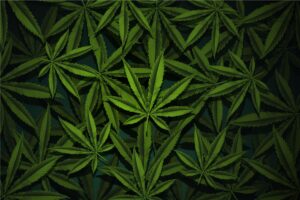
Psychedelic art is a visual expression of the profound shifts in consciousness, creativity, and culture that characterised the 1960s. It emerged as a visual language deeply intertwined with the counterculture movements of the time, reflecting a desire to break free from societal norms and explore uncharted realms of human experience.
It is marked by its bold colours, intricate patterns, and often surreal or cosmic imagery.
Importantly, psychedelic art serves as a testament to the power of art to reflect and shape the zeitgeist of its era. It was not merely an artistic movement but a cultural phenomenon that mirrored the social upheavals, exploration of altered states of consciousness, and the quest for personal and collective transformation.
As we delve into the history and evolution of psychedelic art, we will uncover how it has left an indelible mark on the art world, influencing generations of artists and inspiring creativity.
A Colorful Revolution Begins (1960s)

In the culturally turbulent 1960s, a new wave of artistic expression emerged that would forever change the art world. It was a time of societal upheaval, free love, and a thirst for exploration.
Psychedelic art, with its bold colours, intricate patterns, and mind-bending designs, mirrored the counterculture’s pursuit of altered states of consciousness.
Psychedelic art embraced the use of mind-altering substances, particularly LSD, to unlock hidden dimensions of creativity.
Artists like Alex Grey and Peter Max captured the essence of this era through their vivid, otherworldly creations. It was a visual language that resonated with the youth of the time, seeking to break free from convention.
The Age of Exploration (1970s-1980s)
As the 1960s gave way to the 1970s, psychedelic art continued to evolve. Artists experimented with new mediums, expanding beyond traditional canvases to include posters, album covers, and even clothing. This expansion helped psychedelic art become more accessible and integrated into everyday life.
Album covers like Pink Floyd’s “Dark Side of the Moon” and concert posters for bands like Grateful Dead became iconic representations of the era’s ethos.
These visuals weren’t just art; they were gateways to different dimensions, inviting viewers to embark on a journey of their own.
The Digital Renaissance (1990s-2000s)
With the advent of digital technology in the 1990s, psychedelic art underwent a significant transformation. Artists embraced digital tools to create intricate, fractal-inspired designs that seemed to pulsate with energy. This digital renaissance expanded the possibilities of what could be achieved within the psychedelic art realm.
Interactive art installations at festivals like Burning Man and Coachella allowed participants to immerse themselves in a sensory overload of colours and patterns. These experiences demonstrated the power of psychedelic art to transcend the visual and become a fully immersive journey.
A Contemporary Explosion (2010s-Present)
In the 2010s, psychedelic art reached new heights of popularity and diversity. With the rise of social media platforms like Instagram, artists could quickly share their work with a global audience. This accessibility led to a flourishing of styles and interpretations within the genre.
Artists like Android Jones and Amanda Sage pushed the boundaries of what psychedelic art could be, blending traditional techniques with digital innovation.
The themes explored expanded to include environmental consciousness, spirituality, and the interconnectedness of all life.
Creating Your Psychedelic Experience
Now that you’ve travelled through the history of psychedelic art, it’s time to embark on your own creative journey. Here are a few tips on how to get started:
- Explore Different Styles: Don’t limit yourself to one style. Experiment with fractals, mandalas, or abstract forms to discover what resonates with you.
- Use Bold Colors: The hallmark of psychedelic art is its vibrant colour palette. Don’t be afraid to use bold, contrasting colours to make your artwork pop.
- Incorporate Symbolism: Infuse your work with symbolism and personal meaning. It could be a representation of your inner thoughts, emotions, or spiritual journey.
- Try Digital Tools: Experiment with digital art software to create intricate patterns and designs. Digital tools offer endless possibilities for exploration.
- Share Your Art: In the age of social media, sharing your artwork has never been easier. Connect with fellow artists and enthusiasts, and be open to feedback and collaboration.
Conclusion: A Timeless Journey
Psychedelic art has come a long way since its inception in the 1960s. It has transcended generations, mediums, and cultural shifts to remain a vibrant and influential part of the art world. From the mind-expanding creations of the past to the cutting-edge works of today, the journey of psychedelic art continues to inspire and captivate. As you dive into this colourful world of imagination and exploration, remember that there are no rules in psychedelic art. It’s a realm where your creativity knows no bounds, and your artistic journey is as unique as the patterns that dance before your eyes. So, pick up your brush, open your digital canvas, or simply let your mind wander – the world of psychedelic art awaits your unique perspective.


